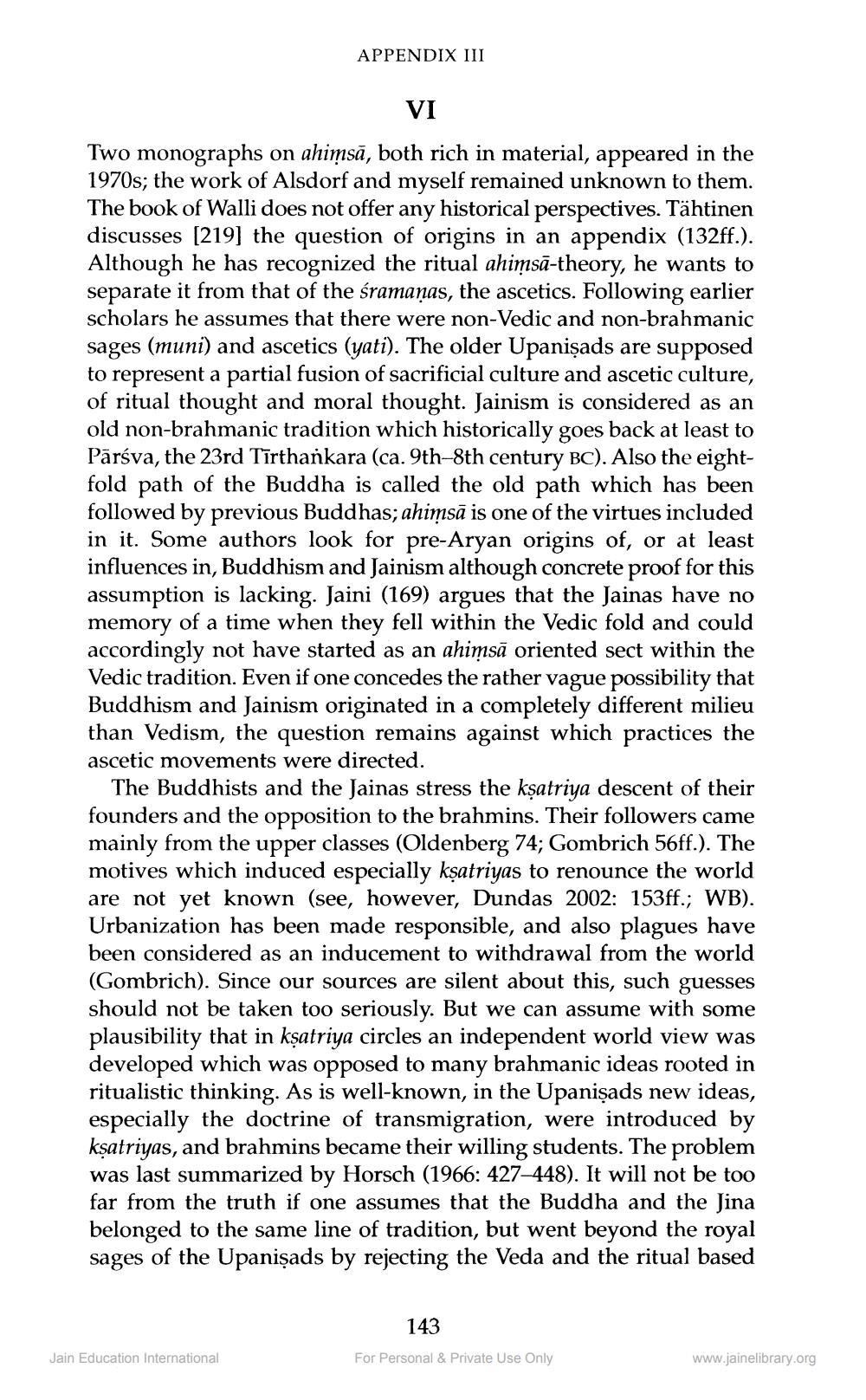________________
APPENDIX III
VI
Two monographs on ahimsā, both rich in material, appeared in the 1970s; the work of Alsdorf and myself remained unknown to them. The book of Walli does not offer any historical perspectives. Tähtinen discusses [219] the question of origins in an appendix (132ff.). Although he has recognized the ritual ahimsā-theory, he wants to separate it from that of the śramaņas, the ascetics. Following earlier scholars he assumes that there were non-Vedic and non-brahmanic sages (muni) and ascetics (yati). The older Upanişads are supposed to represent a partial fusion of sacrificial culture and ascetic culture, of ritual thought and moral thought. Jainism is considered as an old non-brahmanic tradition which historically goes back at least to Pārsva, the 23rd Tīrthankara (ca. 9th-8th century BC). Also the eightfold path of the Buddha is called the old path which has been followed by previous Buddhas; ahimsā is one of the virtues included in it. Some authors look for pre-Aryan origins of, or at least influences in, Buddhism and Jainism although concrete proof for this assumption is lacking. Jaini (169) argues that the Jainas have no memory of a time when they fell within the Vedic fold and could accordingly not have started as an ahimsā oriented sect within the Vedic tradition. Even if one concedes the rather vague possibility that Buddhism and Jainism originated in a completely different milieu than Vedism, the question remains against which practices the ascetic movements were directed.
The Buddhists and the Jainas stress the ksatriya descent of their founders and the opposition to the brahmins. Their followers came mainly from the upper classes (Oldenberg 74; Gombrich 56ff.). The motives which induced especially ksatriyas to renounce the world are not yet known (see, however, Dundas 2002: 153ff.; WB). Urbanization has been made responsible, and also plagues have been considered as an inducement to withdrawal from the world (Gombrich). Since our sources are silent about this, such guesses should not be taken too seriously. But we can assume with some plausibility that in kşatriya circles an independent world view was developed which was opposed to many brahmanic ideas rooted in ritualistic thinking. As is well-known, in the Upanişads new ideas, especially the doctrine of transmigration, were introduced by ksatriyas, and brahmins became their willing students. The problem was last summarized by Horsch (1966: 427-448). It will not be too far from the truth if one assumes that the Buddha and the Jina belonged to the same line of tradition, but went beyond the royal sages of the Upanişads by rejecting the Veda and the ritual based
143
Jain Education International
For Personal & Private Use Only
www.jainelibrary.org




